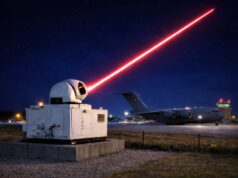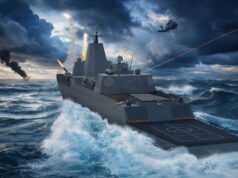Mark Francois has confirmed that an initiative which maintains the training of staff formerly based at RAF Kinloss has been extended. Mark Francois is Minister of State at the UK Ministry of Defence, with responsibility for the armed forces, cyber activity, and force generation.
“A number of short-term post extensions, varying from three to fifteen months, were agreed in 2013 and 2014.”

The Seedcorn initiative exists to sustain the UK’s capability to operate fixed wing Maritime Patrol Aircraft (MPA) and maintain the associated skills of its personnel, should the UK wish to regenerate the capability. The estimated cost of the initiative on average is £2.4 million per year for the next five years; this includes salary and allowances.
UK aircrew are on exchange with a variety of allied forces where they are operating alongside our allies on-board front line maritime patrol aircraft in order to maintain their anti-submarine and anti-surface warfare, long-range search and rescue and ISTAR skills.
There are currently 32 personnel deployed overseas in Maritime Patrol Aircraft roles under the Seedcorn initiative with a further seven on traditional exchange programmes. 115 personnel are currently operating in other flying roles in the UK.
The SNP’s Westminster leader, also an active proponent of accelerating the fitting of collision warning systems to fast-jets, called on defence officials to accelerate the plans.
“It is welcome news that the Seedcorn programme is being extended in order to maintain the core skills required for using maritime patrol aircraft.Of course it would be much easier if the UK had their own MPA aircraft in the first place but of course they don’t after the utterly mad decision to scrap them all.
Even the MoD wouldn’t train people for something they don’t intend on having so why on earth do they not just get on with it and acquire maritime patrol aircraft off the shelf as quickly as possible?
Instead we witness the regular farce of them pleading for assistance from allies. They need to crack on and acquire these vital aircraft.”
The UK Government has previously confirmed that it has had to call on support from NATO allies such as US, France, Norway and Canada, who have temporarily operated maritime surveillance aircraft from RAF Lossiemouth and other UK bases to plug the capability gap. This however is not unusual, NATO allies have also called on UK assistance for strategic capbilities on many occasions.

It has even been suggested by many relevant sources that the fleet may be a mix of manned and unmanned platforms as many personnel are operating the Triton UAV as part of the Seedcorn initiative.
Four personnel were scheduled for training on the MQ-4C Triton during June and August of last year. The Triton is a maritime version of the Global Hawk remotely piloted surveillance vehicle. The high-altitude, long-endurance aircraft is in its flight-test phase ahead of deliveries to the US Navy.
Triton has already been ordered by the US Navy to operate alongside Boeing P-8 Poseidon MPA’s. Australia may also buy the aircraft to complement the P-8’s it has on order.
In a report on Future Maritime Surveillance, the House of Commons Defence Committee noted that the UK has a strategic requirement for maritime surveillance on a world-wide basis, for both military and non-military purposes. It stated that it had serious concerns regarding the MPA capability gap and its impact on the UK’s ability to undertake the military tasks envisaged by SDSR 2010.
For quite some time, we have been hearing from a few colleagues and friends in the forces that they expect Seedcorn to be extended and, perhaps unsurprisingly, that the regeneration of the capability lost when Nimrod was retired in 2010 is to happen at this years Strategic Defence and Security Review.
In his evidence to the same Committee in October of last year, the Secretary of State for Defence stated that SDSR 2015 would need to consider the MPA capability in detail, considering whether ‘based on our experience since 2010 of managing this risk – largely by working with allies – it is a capability that we need to regenerate and, if so, how we would most efficiently regenerate it.
While the ordering of new aircraft this year isn’t definite, we’re confident it’ll happen. Many sources including our friends and colleagues from industry, the forces and around the defence establishment believe it’ll happen this year .













With respect, nothing in this article justifies the headline “Maritime Patrol Aircraft capability to be regenerated”. There is a suggestion that it may be, as the Seedcorn programme would be a waste of money if it were not, but there is no statement or evidence that it WILL be.
It’s true, that’s all we can say at this stage.
Which part is true? That the RAF Seedcorn have been extended by a few months?
I would be delighted if this were true. Scrapping MRA4 at such a late stage was nothing short of sabotage. Living in Gibraltar, where the Mighty Hunter once visited regularly (and Shackletons before them*), it would be great to see MPAs again. We also used to host Orions, Auroras and Atlantiques.
Looking at the illustration of the MQ-4C Triton, I was wondering whether these could land on our short runway. Our larger visitors are usually A319 / A320s, but we used to host 737s, 757s and even a NATO E-3 AWACS. More recently, we’ve had C-17s and the first RAF A400M Atlas.
*Shackletons appear in a film about Buster Crabb set in Gibraltar. It’s set in WW2, so historically incorrect but who cares. https://www.youtube.com/watch?v=5My2KyaZt60
There’s no requirement to have these at Gibraltar.
Gibraltar has a runway capable of taking the Nimrod and therefore, hopefully, its successor. Given the situation in the Mediterranean, there is every reason to have a Nimrod type plane at Gibraltar. If not based there, then on a rotation basis. With the 2015 election over, it is to be hoped there will be no delay in funding a new maritime patrol aeroplane: Airbus-based to achieve spares and support commonality with the RAF’s Voyager fleet might be the cost effective answer.
[…] UK Defence Journal – More on the Project Seedcorn […]
Having worked on the Nimrod during my military days, I still find it difficult to understand how a UK government can be so complacent in their understanding and neglect of such an important capability.
Nimrod was a truly capable platform that not only performed brilliantly as a submarine hunter, but also as an Air Sea Rescue platform which was responsible for the rescue of many people.
Although I can relate to the reasoning for cancelling a project that was out of control, I cannot understand how a UK government, who unfortunately have very few politicians with military experience could put this country and the submarine fleet in such an exposed position.
The UK public should be made fully aware of current incursions by Russia that have truly exposed our once proud and capable military. We are unfortunately not a country that is capable of projecting world power.
[…] as of yet no plans to replace their retired Nimrod fleet. That being said, the Government has faced substantial pressure for a new fleet to be included in the 2015 SDSR later this year and there are high expectations […]
It’s the permanent civil servant who rum the show. Ministers just say what they are told….